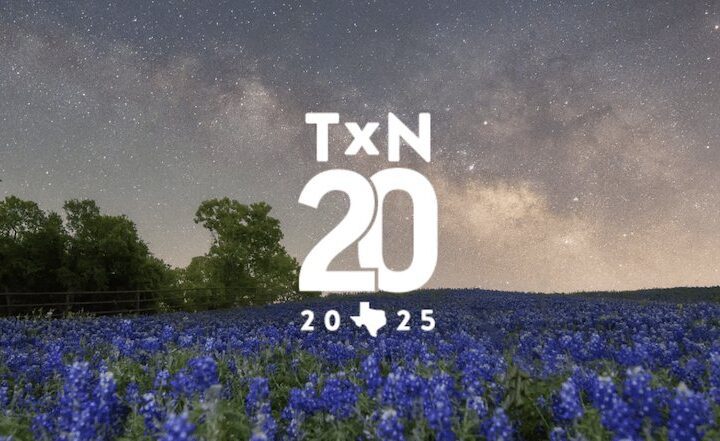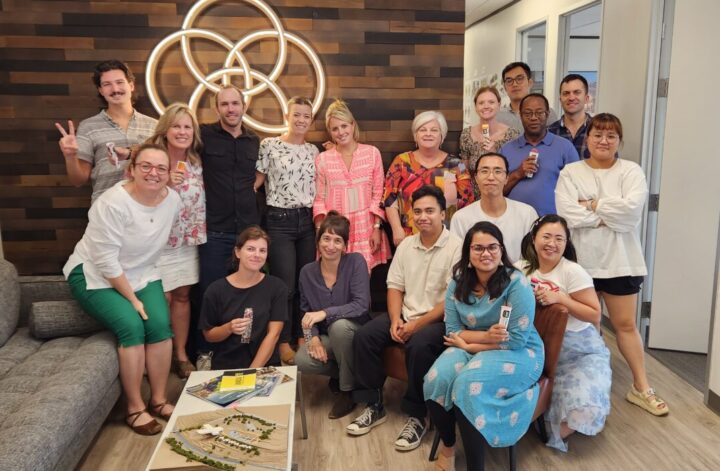This year’s Texan by Nature Conservation Summit brought together an inspiring cross-section of scientists, business leaders, nonprofits, and landowners to explore one shared goal: how Texas can balance business and natural resource protection in an era of rapid growth. Attending virtually, I was struck by the consistency of the message – conservation isn’t just an environmental cause anymore; it’s a business strategy, a public health tool, and a foundation for resilience.
The panels revealed that the future of conservation in Texas lies at the intersection of data, collaboration, and storytelling. Below are some of the biggest themes and takeaways that stood out – insights that can guide organizations, communities, and individuals working to make measurable change.
1. Conservation as Core Operations
The first theme was clear and powerful: conservation belongs at the center of how we operate businesses and communities, not on the sidelines. When environmental goals are integrated into financial planning, supply chains, and risk management, sustainability becomes part of an organization’s DNA.
- Conservation is no longer optional. The organizations leading the charge, like DFW Airport, Molson Coors, and H-E-B, are showing that sustainability creates operational efficiency and brand strength.
- DFW Airport has been carbon-neutral since 2016, diverting over 90% of construction waste and saving airlines millions in fuel and energy costs – proof that conservation can enhance profitability.
- Molson Coors’ water stewardship projects in the Richland-Chambers watershed have conserved more than 2 billion gallons of water, underscoring how protecting natural resources directly protects production stability.
- H-E-B’s “Trees for Texans” program strategically uses environmental data to guide canopy growth in heat-vulnerable neighborhoods, creating community and ecological benefits while supporting its business footprint.
Key Lesson: Conservation should be built into core operations, with measurable goals and clear ROI, just like any other business initiative.
2. The Power of Partnerships
Every successful project shared at the Summit had one defining trait: collaboration. Conservation outcomes are strongest when governments, corporations, nonprofits, and landowners work in sync. Partnerships pool expertise, distribute risk, and amplify credibility across sectors.
- Cross-sector collaboration is the multiplier. No single entity (private or public) can achieve scalable impact alone.
- Apache Corporation and the Borderlands Research Institute partnered to test revegetation methods on retired well pads, merging industry resources with scientific research.
- H-E-B, the Texas A&M Forest Service, and Texan by Nature co-created a model for urban reforestation that blends corporate investment with community engagement.
- Nonprofits and landowners continue to prove that trust and local knowledge are essential for long-term conservation gains.
Key Lesson: Start partnerships early and treat them as strategic assets. The right alliances drive innovation, funding, and measurable impact.
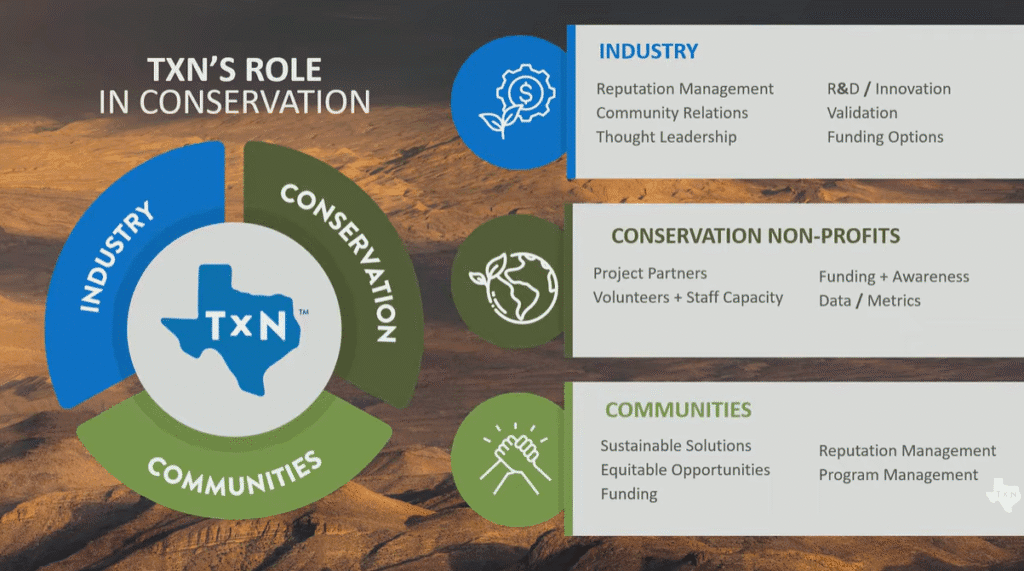
3. Measure, Manage, and Communicate
“Measure what matters” could have been the unofficial theme of the entire Summit. Speakers across industries emphasized that you can’t manage what you don’t measure, and you can’t inspire support without communicating those results clearly.
- Set a solid baseline. Before a project begins, define metrics that capture environmental, social, and financial outcomes.
- Use smart monitoring tools. Drones, GIS mapping, and the Return on Conservation™ Index help teams visualize progress and validate claims.
- Communicate with clarity. Stakeholders, from executives to local residents, need accessible data and visuals, not jargon.
- Transparency builds trust. Public dashboards and progress reports turn accountability into advocacy.
Key Lesson: Define metrics early, monitor consistently, and translate data into stories that resonate with both decision-makers and the public.
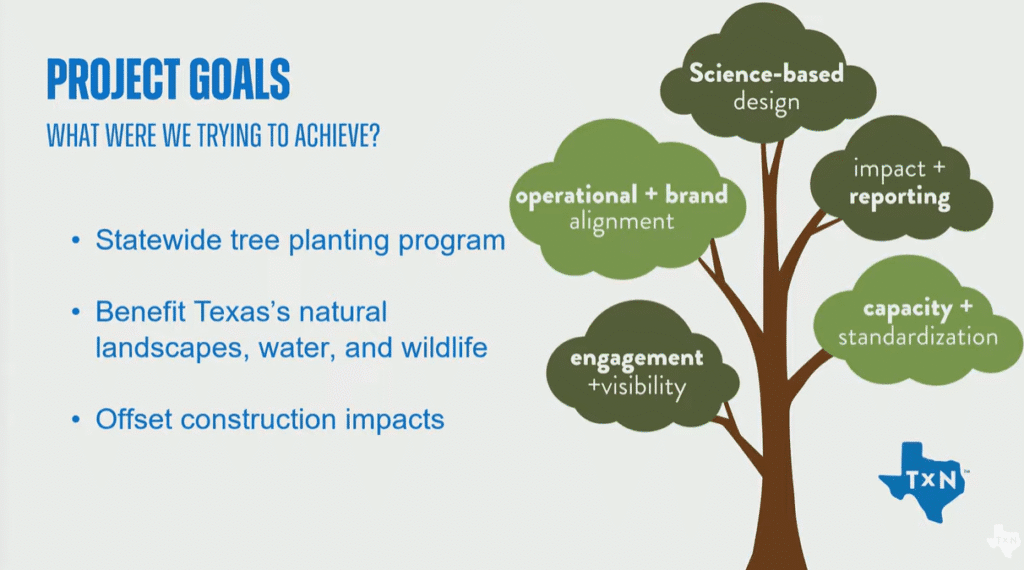
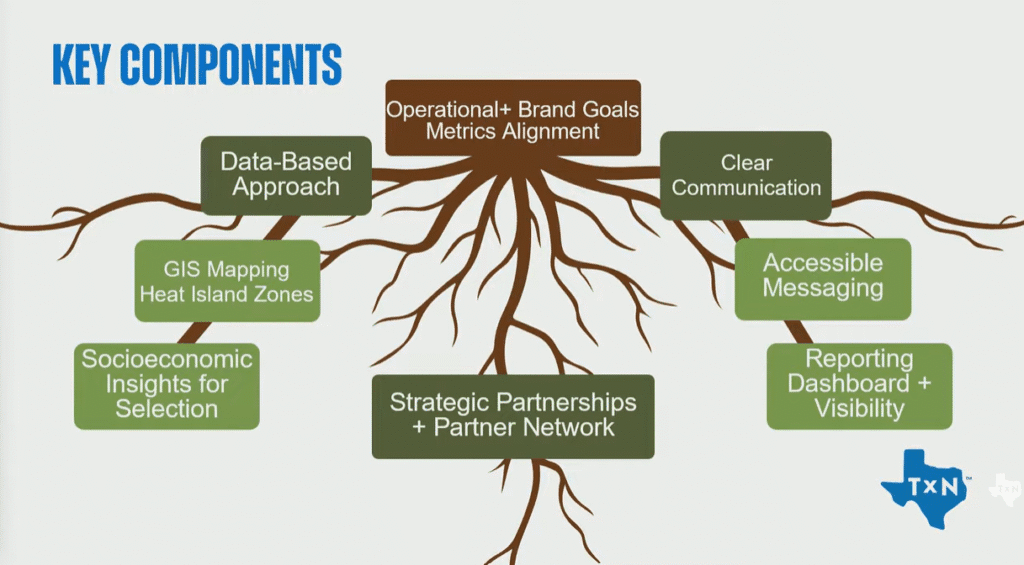
4. Bridging Technology with Local Knowledge
Innovation doesn’t replace people, it empowers them. Several case studies demonstrated that the most effective conservation efforts combine advanced technology with local expertise to make decisions rooted in both data and lived experience.
- High-tech tools meet hands-on stewardship. Remote sensing, mapping, and modeling are invaluable when paired with the wisdom of those who know the land best.
- The Wildcat Bluff Nature Center’s rehydration project in the Panhandle uses small-scale rainwater capture structures alongside agroforestry techniques guided by regional conservationists.
- Borderlands Research Institute works directly with ranchers to merge drone data with traditional land management, improving adoption and outcomes.
Key Lesson: The future of conservation lies in technology that supports, not replaces, community-driven insight.
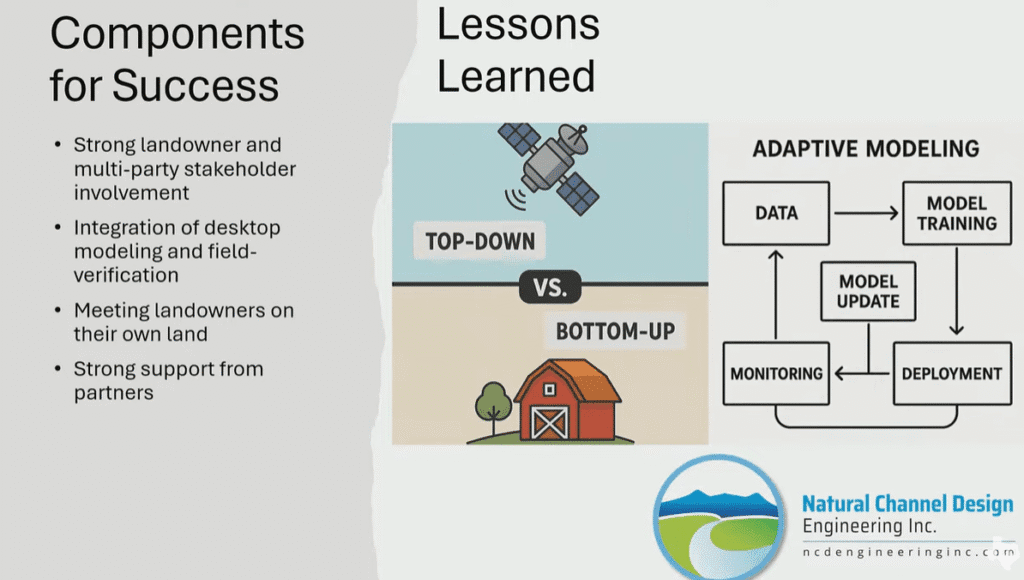
5. Conservation as Infrastructure
One of the most compelling themes was the idea that nature is infrastructure providing the same essential services as roads, power lines, and pipelines. Clean water, soil stabilization, flood control, and carbon capture are not luxuries; they’re vital assets that deserve investment.
- Quantifying nature’s value. Organizations like EcoMetrics and Texan by Nature are pioneering ways to express environmental benefits in financial terms.
- Assigning monetary value to services like flood mitigation or air filtration helps secure corporate and policy buy-in.
- Investments in natural capital yield measurable returns, often 20–30 times higher than the original conservation costs.
Key Lesson: When ecological benefits are measured like assets, they’re protected like assets.
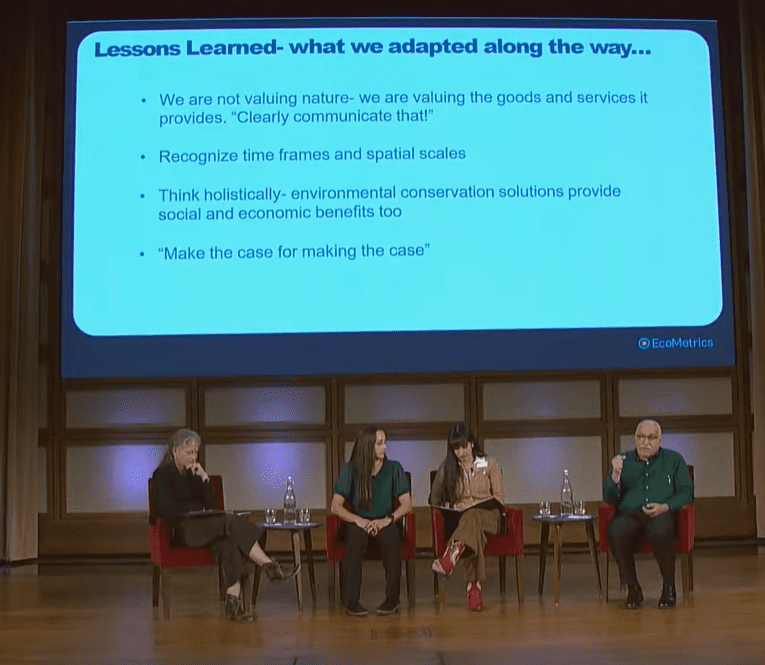
6. The Human Element: Engagement and Education
Behind every successful conservation project are people (volunteers, students, landowners, and employees) who connect with nature on a personal level. The Summit reinforced that education and engagement are as critical as data and funding.
- Texas Master Naturalist Program has trained more than 17,000 volunteers who have contributed over 7.5 million hours of service, engaging more than 7 million Texans in nature-based education.
- H-E-B’s Trees for Texans dashboard lets the public see where trees are planted and track the benefits over time, transforming conservation data into community pride.
- Citizen science programs empower everyday Texans to participate in habitat restoration, water monitoring, and wildlife observation.
Key Lesson: Conservation becomes culture when people can see, feel, and take part in it.
7. Framework for Success: Set → Implement → Report
Across the three panels, a clear formula for conservation success emerged. Every thriving initiative followed a simple yet powerful cycle: set measurable goals, implement collaboratively, and report transparently.
- Set measurable goals. Link conservation outcomes directly to business priorities and community needs.
- Implement collaboratively. Engage diverse partners to ensure that every stakeholder, from funder to fieldworker, is invested in the results.
- Report transparently. Share results openly using dashboards, maps, and metrics to sustain trust and momentum.
Key Lesson: The “measure → manage → communicate” cycle turns conservation from a one-time project into a long-term movement.
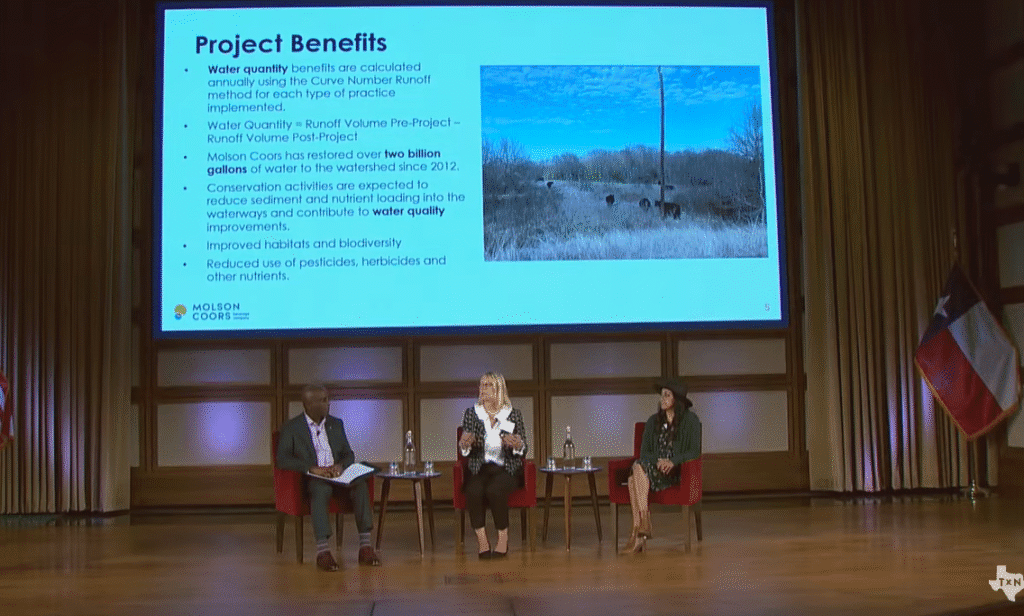
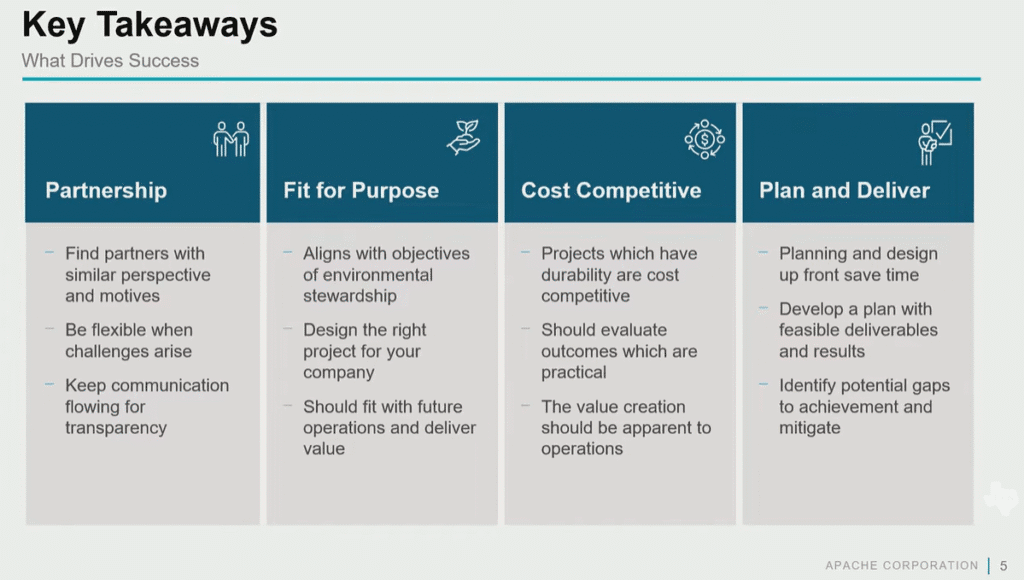
8. Tools and Metrics in Action
The Summit showcased a growing toolkit for capturing, visualizing, and sharing conservation progress. From water quality to tree canopy to wildlife movement, technology now provides the data needed to scale solutions.
- Mapping and Monitoring: GIS heat maps, NDVI vegetation indices, and drone imagery help track changes in land health and water availability.
- Valuation Frameworks: The Return on Conservation™ Index and EcoMetrics ROI modeling connect ecological outcomes to economic impact.
- Engagement Tools: Dashboards, interactive story maps, and social media outreach make data accessible and relatable.
Key Lesson: Technology is most valuable when it transforms complexity into clarity for audiences of all backgrounds.
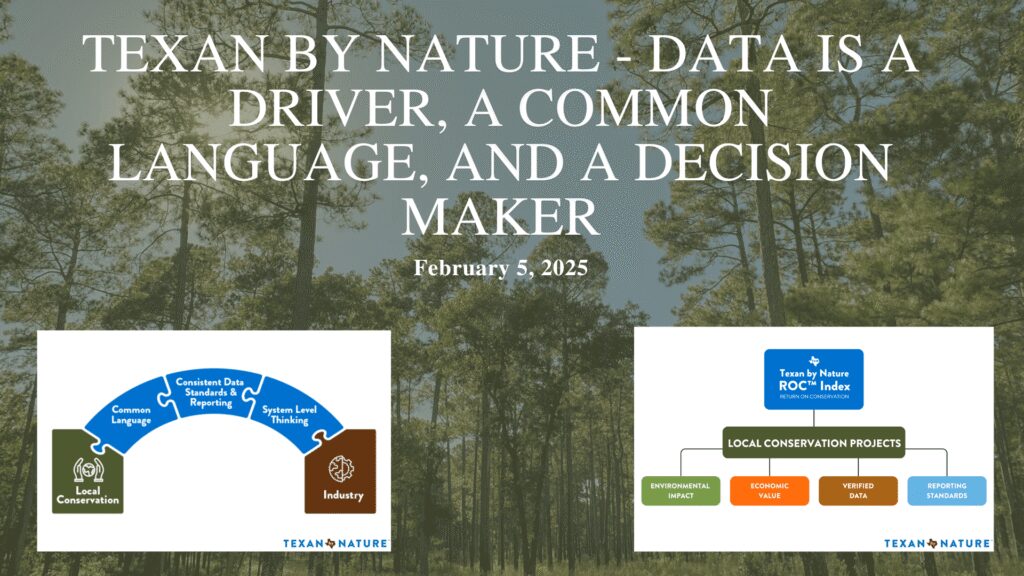
9. Communication and Reporting Insights
One of the most practical lessons was that communication strategy is conservation strategy. The way we frame and share results determines how stakeholders perceive impact, value, and urgency.
- Lead with purpose. Explain why the work matters to people, not just the planet.
- Simplify the message. Maps, infographics, and short briefs engage far more effectively than lengthy reports.
- Be transparent. Acknowledge limitations, data gaps, and long-term horizons—it builds credibility.
- Integrate stories across channels. Connect conservation updates to workforce communications, CSR reports, and brand storytelling.
Key Lesson: Clarity, authenticity, and consistency are the most powerful tools for mobilizing conservation support.
10. Final Reflections
The 2025 Texan by Nature Conservation Summit captured a defining moment for Texas: a recognition that business success, community well-being, and environmental stewardship are interdependent. Across the panels, speakers demonstrated that measurable conservation isn’t just possible – it’s profitable, repeatable, and scalable.
Texas is setting a model for how to connect data with purpose, partnership with practice, and conservation with prosperity.
As someone who’s spent my career at the intersection of communications and sustainability, the Summit left me feeling both inspired and refreshed. The path forward is clear, measure wisely, manage collaboratively, and communicate boldly.
When Texas takes care of nature, nature takes care of Texas.
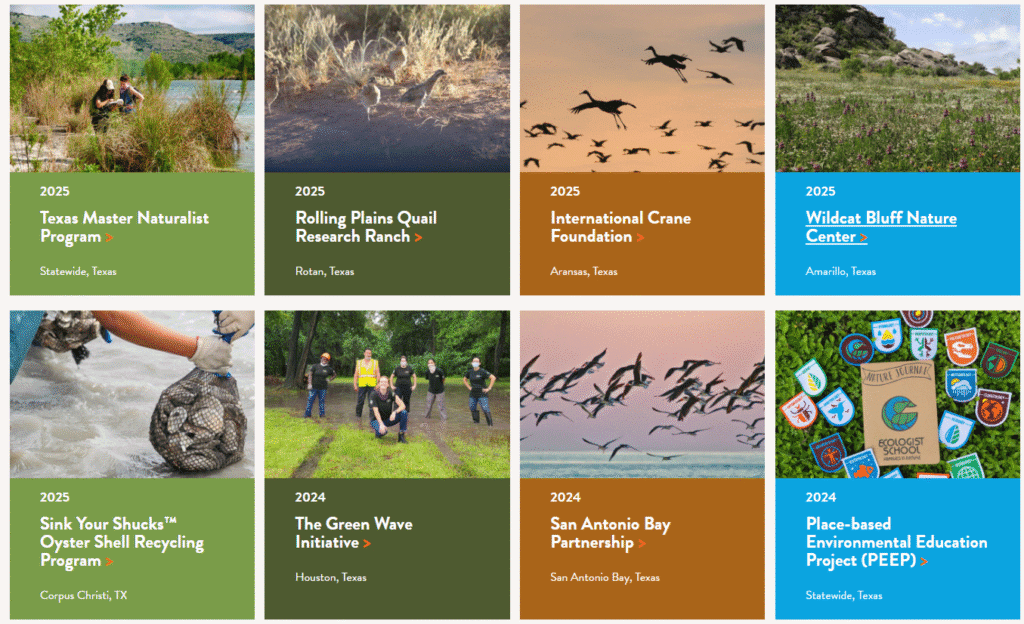
Here’s a tight, skimmable outline of the big themes, key takeaways, and lessons learned from the panel:
Big Themes
- Conservation as Operations
- Treat conservation like core ops: set targets, budget for it, track results, and iterate (DFW, Molson Coors, H-E-B).
- Partnerships as the Force Multiplier
- Business + NGO + agency + landowners beats any single actor (e.g., Apache + BRI; H-E-B + TxN + Texas A&M Forest Service).
- Measure > Manage > Communicate
- Start with baselines, monitor consistently, pivot based on evidence, and report transparently (all panels).
- Tech + Local Knowledge
- Pair GIS, drones, remote sensing, and AI with rancher/landowner insight for better targeting and adoption (Delaware Basin work; landscape rehydration).
- Landscape-Scale Resilience
- From aquifer recharge and riparian restoration to urban heat mitigation and oysters—projects link ecology, water, climate, and community.
- Value Translation
- Convert ecological outcomes into business value and social value (EcoMetrics’ ROI framing; ROC Index).
Cross-Cutting Takeaways
- Co-create goals and metrics early. Agree on what success is—ecological AND business—and how it’ll be measured.
- Baseline first. Use off-site controls, historical imagery, soil/vegetation indices, and reference conditions.
- Monitor smart. Mix field checks with low-cost remote sensing, drones, and public datasets; standardize methods.
- Plan for adaptation. Build in decision points to drop low-yield tasks (e.g., cut carbon soil analysis) and scale what works.
- Budget for monitoring and comms. Don’t fund “the trees” without funding the people, data collection, and follow-up.
- Make data public and usable. Dashboards, story maps, simple visuals; less is more.
- Engage the right humans. Internal ops, field crews, land departments, school admins, volunteers—each needs tailored messaging.
- Leverage crises. Use droughts, floods, or declines to align stakeholders and accelerate better practices (pronghorn fencing change, post-fire work).
Practical Lessons (with examples)
- Fit-for-purpose design beats idealized plans.
- Apache/BRI designed reclamation that field teams can replicate in West Texas conditions.
- Long-term monitoring changes behavior.
- Pronghorn collars revealed fence bottlenecks and stress mortality; practices shifted statewide.
- Small structures, big hydrology.
- “Slow–spread–soak” brush/dam features can measurably aid aquifer recharge and riparian function.
- Urban canopy as infrastructure.
- H-E-B targeted hottest census blocks; trees framed as cooling + community health + brand-aligned service.
- Translate outcomes to $$ value.
- Use ecosystem service valuation (e.g., storm surge risk avoided; social return) to compete for budget.
Metrics That Matter (starter list)
- Water: acre-feet recharged/saved; infiltration rate; baseflow days; NDWI trends.
- Habitat: native cover %, patch connectivity, species abundance/return rates.
- Soils: vegetation establishment, erosion reduction, soil moisture profiles.
- Climate/Heat: canopy added, modeled °F reduction, energy savings proxies.
- Social: volunteers engaged, students reached, shade access, health co-benefits.
- Business: cost per acre restored, O&M avoided costs, risk reduction, ROI/ROC.
Tools & Methods
- GIS heat mapping; NDVI/NDWI time series; historical aerials/Landsat; RAP datasets.
- Drone orthomosaics + 3D models; LiDAR where available.
- Standardized photo points and simple mobile forms for field data.
- Public dashboards (simple, filterable), semiannual reports, and white papers.
Communication & Reporting Tips
- Lead with the “why.” Tie to operations, risk, and workforce health—not just ecology.
- Show the chain: Input → Activity → Output → Outcome → Value (financial + social).
- Pre-brief partners on the exact data and photo requirements (make forms idiot-proof).
- Visual over verbose. One clear map/metric is better than a 20-page report.
- Avoid greenwashing: Be transparent on uncertainty, time horizons, and tradeoffs.
Common Pitfalls to Avoid
- Underfunding monitoring/comms; overengineering baselines; ignoring landowner realities.
- Designing pilots you can’t scale; chasing “pie-in-the-sky” instead of pragmatic, replicable steps.
- Siloed internal buy-in—loop in land, ops, finance, and comms at the start.
Fast-Start Playbook (checklist)
- Pick a priority (water, heat, habitat) tied to ops risk/opportunity.
- Assemble partners (technical + landowners + implementation + valuation).
- Define metrics & baselines (co-created; practical to collect).
- Pilot with replication in mind (fit-for-purpose, costed, documented SOPs).
- Monitor + adapt (set checkpoints; pivot quickly).
- Value the benefits (EcoMetrics/ROC or similar) to secure future funding.
- Publish simply (dashboard + short brief); celebrate partners; invite scale.
These themes and lessons are portable – whether you’re restoring reefs, reclaiming well pads, cooling schoolyards, or rehydrating working lands.
*All image credits and attributions go to Texan By Nature via website and screenshots from their public YouTube video.
*Content was generated with AI based on my notes and direction, then edited and refined by me for accuracy.

